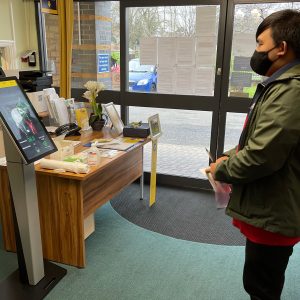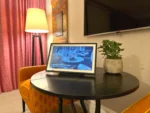Virtual Spaces – Connecting to the World around us
Bringing the World to Life
Running alongside a series of programs aimed at the elderly, both in residential and assisted living homes, The Digital Line (TDL) has designed a program of VR experiences that transport residents to a selection of global locations they might otherwise never be able to visit. From the plains of Africa to the serene lakes of Geneva and the dizzy heights of outer space, a world of digital wonder waits for anyone ready to climb on board.
The powerful properties of virtual reality for the elderly and occupants with mental health problems is a trend rapidly gaining pace worldwide. Virtual Spaces will allow residents to request travel destinations that they can journey to, all from the comfort of their homes. Travel is often about seeking deeper emotional and personal connections with the environment around us, to create memories that can be recalled, re-lived and re-shared for a lifetime.
Virtual reality (VR) is a technology that generates computerised or realistic 3D and 360-degree images and sounds that give the viewer a sense of physical presence in that environment through the use of a headset and headphones. Unlike a regular video image, which is shot from a fixed viewpoint, VR production captures every part of a location in a unique and immersive way as if you are really there.
The Benefits of Virtual Spaces
Evoking a sense of ‘being there’
Studies have shown that our brains have an inbuilt VR-like mechanism that enables us to “live” imagined experiences. Much of our waking life is spent thinking about either the past (retrospection) or the future (prospection). This is known as mind wandering.
During these events, we’re not paying attention to the current world around us. Instead, we’re recalling memories or creating and processing imagined futures. This process enables the user to explore a scene at their own pace while creating unique memorable experiences.
When we’re engaged in mind wandering, our brains process and appraise mental images through the same neural pathways they use to receive stimuli from the real world. So, the imagined past or future can evoke emotions and feelings similar to those we would feel in everyday life.
VR can evoke these same feelings. Virtual Spaces uses sensory stimulation and vivid imagery to generate authentic experiences. Immersion in these environments can lead to a deeper understanding of a place or event more vivid than a book or pictures can evoke.
Creating the sense of absorption leads to a feeling of “presence” or “being there”, and has the potential to induce the perception of relaxation, similar to that gained from travel in real life.
Wildlife watching can bring out feelings of empathy, surprise, novelty, even fear. It can also generate excitement, stimulation, entertainment and learning.
Enhancing your health and wellbeing.
The Virtual Spaces program is an excellent aid to encourage wellness, with numerous scientific studies confirming that a change in your daily routine and activities can be highly beneficial to your mental state. Research demonstrates that immersion in the outdoors also encourages relaxation, rejuvenation and improved self-esteem, which contributes to reduced symptoms of anxiety and depression.
TDL’s unique experiences include Walking With Lions, Lakeside Picnic, Saharan Adventure, Snow Trek and Meditation Beneath the Stars.
Tags: Elderly, Virtual Spaces, VR

 Share On Facebook
Share On Facebook Tweet It
Tweet It










